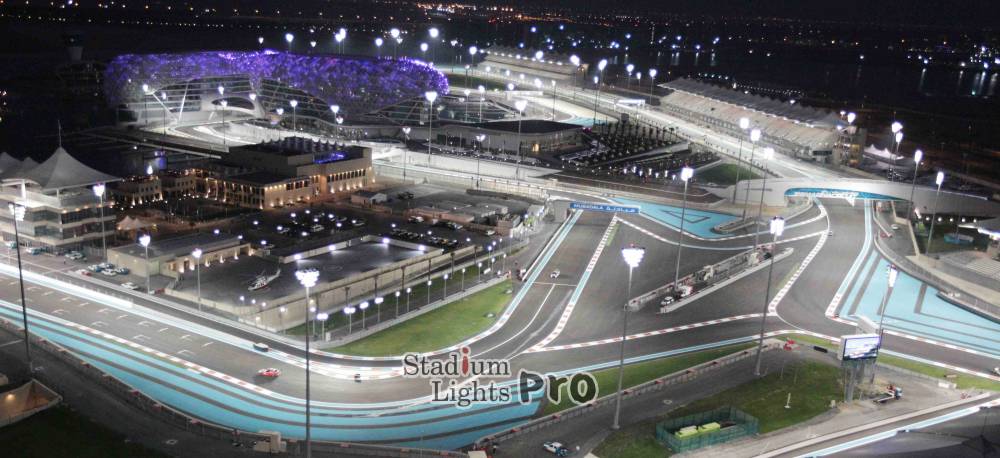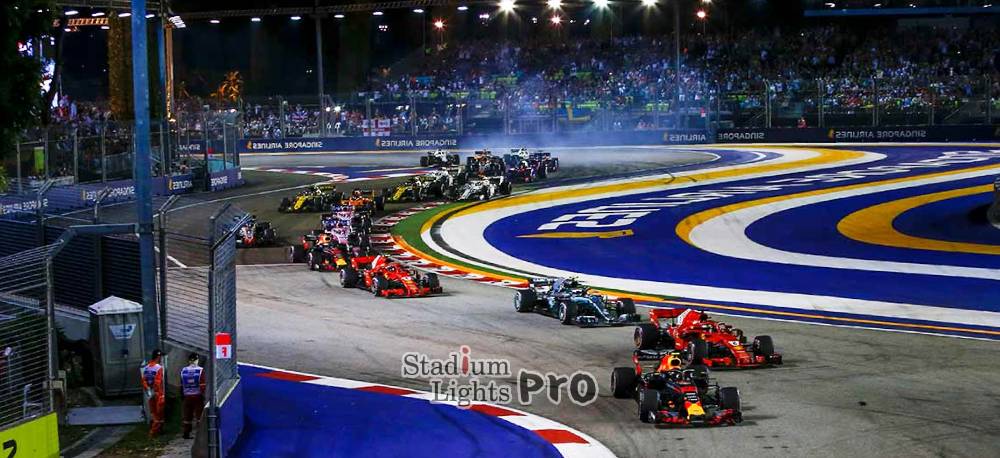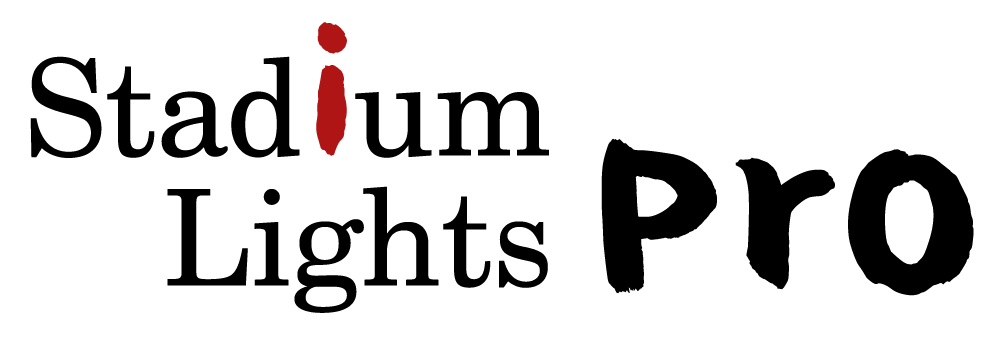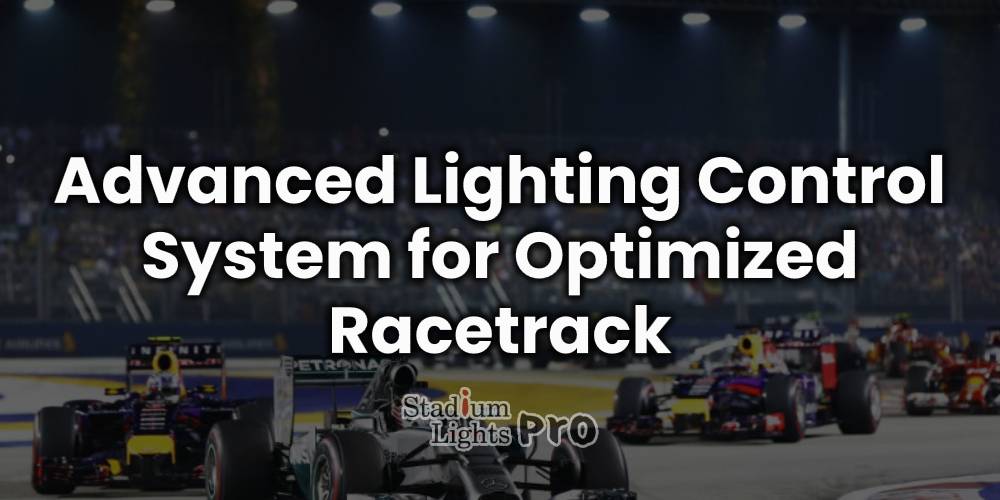In modern racing, whether on a motor circuit, a horse track, or a karting venue, lighting plays an integral role in providing visibility, safety, and even influencing the performance of competitors. The advancement in lighting technology has paved the way for more precise and versatile control systems that allow for greater flexibility and efficiency in lighting management. This evolution has brought about the development of advanced lighting control systems that can cater to the specific demands of a racetrack environment, optimizing both performance and safety.
Table of Contents
ToggleDuration Control: Tailored Lighting Timing

One of the standout features of advanced lighting control systems for racetracks is the ability to control the duration of the lighting. Race events take place at various times of the day, and the lighting conditions during the event can change significantly. As a result, managing the timing of the lighting is vital in ensuring that the environment remains consistent, functional, and safe. Sometimes, the lighting needs to be bright and consistent, while at other times, it might need to fade or brighten at specific intervals to match the event’s progress or to reflect the different phases of the race. Effective control of lighting duration plays a central role in maintaining an optimal visual environment, whether it’s for a nighttime race or a transitional period during the day when sunlight is fading.
A well-designed lighting control system can be programmed to respond automatically to the time of day, adjusting the lights in a way that reflects the changing environment. For example, as daylight begins to fade and night approaches, the system can gradually increase the brightness of the lights, ensuring that the track is illuminated to the right level, without being too intense for the drivers and spectators. On the other hand, if the race concludes earlier than expected or a particular part of the track is no longer in use, the system can lower the brightness or even turn off certain sections of lights, saving energy and prolonging the lifespan of the system.
Having the ability to precisely set lighting durations for different segments of the track or during different phases of the event allows organizers to not only provide the appropriate lighting conditions for the race but also optimize energy usage. This kind of control not only helps to enhance the experience for participants and spectators but also contributes to reducing operational costs, as lighting will only be on when necessary. Moreover, this efficient management of lighting extends the life of the lighting infrastructure, reducing the need for frequent maintenance or replacement.
Adaptive Lighting During Day and Night
One of the primary functions of a racetrack lighting control system is its ability to automatically adjust to changing lighting conditions throughout both the day and night. During daylight hours, artificial lighting may be unnecessary, especially if natural light is sufficient to illuminate the track. However, as dusk approaches, the system must be programmed to gradually turn on the lights to avoid a sudden change in visibility, which could be disorienting or dangerous. This smooth transition is crucial to maintaining clear visibility for both competitors and spectators, ensuring that the track remains well-lit during all stages of the race.
In addition to transitioning from day to night, the system must be able to maintain a steady level of lighting during the night to ensure that the race can continue under optimal conditions. Night races, such as those often seen in motorsports, require high-quality, high-intensity lighting to provide clear visibility for both the drivers and any supporting crew. The lighting system can be programmed to remain on throughout the race duration, maintaining consistent illumination, or it can be dynamically adjusted based on the stage of the race or the amount of daylight left.
Moreover, the scheduling of races or events often determines when and how long the lights stay on. If an event is running on a fixed timeline, the system can automatically adjust the lighting according to the event’s schedule, ensuring that the lighting remains synchronized with the event’s progress. For example, during qualifying rounds, practice laps, or the final race, the lights can be adjusted to cater to the varying needs of each segment, ensuring that competitors are provided with the best lighting conditions at all times.

Brightness Control: Precision and Flexibility
Another integral feature of modern racetrack lighting systems is the ability to control the brightness of the lights with precision and flexibility. Racetracks require powerful, high-intensity lighting to ensure the safety and visibility of participants, especially during nighttime races. However, excessive brightness can lead to discomfort or even hinder visibility, as it may cause glare or create hotspots that obscure important details of the race. This makes brightness control a key factor in achieving the ideal lighting environment for a racetrack.
With advanced lighting control systems, it is possible to adjust the brightness of the lights in real time, depending on the specific needs of the track and the race. For example, during practice laps, the lighting can be set to a lower intensity, providing a more comfortable and less distracting environment for drivers who are familiarizing themselves with the track. On the other hand, during the actual race, when every second counts and competitors are pushing themselves to the limit, the system can increase the brightness to ensure maximum clarity and safety for all participants.
Furthermore, the ability to dynamically adjust brightness also has advantages for spectators. Some parts of the track, such as the grandstands, might need softer lighting to create a more comfortable viewing experience, while other areas of the venue, such as the pit zones or high-speed straights, might require more intense lighting to ensure that everyone can follow the action clearly.
Dynamic Brightness for Different Track Zones
Racetracks are large, complex spaces, with different sections that have varying lighting needs. The straights, corners, pit stops, and other areas of the track all require different intensities of light to ensure that the race can proceed smoothly and safely. For example, cornering areas, which often involve tight turns or challenging terrain, may require additional lighting to highlight the turns and allow competitors to navigate them safely. On the other hand, straight sections of the track might need more subtle lighting to prevent glare or distractions.
Advanced lighting control systems allow the lights to be programmed and adjusted for each zone of the track. The system can automatically change the light intensity in different sections based on the race’s progress or other conditions, ensuring that each area is illuminated to the appropriate level. This can prevent competitors from straining their eyes in high-intensity zones or missing critical details in areas where softer lighting is more appropriate. Spectators also benefit from this adjustment, as they can enjoy a clear view of the entire race without being distracted by overly bright sections or dimly lit areas.
By managing brightness dynamically and according to track zones, lighting systems create a more balanced and enjoyable experience for both competitors and spectators, helping everyone focus on the race itself.
Lighting Effects: Enhancing the Experience
Lighting effects are an exciting aspect of modern racetrack lighting systems, and they go beyond merely providing illumination. Advanced control systems can be used to create dynamic lighting effects that enhance the overall race experience, adding excitement and drama to the event. The ability to use lighting as a visual tool to highlight key moments of the race brings a new layer of immersion and engagement to both the competitors and the spectators.
For example, during thrilling moments in the race—such as a close finish, an overtaking maneuver, or a pit stop—lighting can be programmed to flash or intensify, drawing attention to the event and adding to the excitement. Similarly, when a car or horse crosses the finish line, the lighting can change to create a celebratory atmosphere, highlighting the winner’s success and building the excitement for the crowd.
Lighting effects can also be programmed to reflect the emotions and drama of the race. At critical moments, such as high-speed battles or significant crashes, the lighting can change to reflect the intensity of the situation, creating a more thrilling and emotional atmosphere for everyone involved.
Synchronization with Event Phases
An advanced lighting control system offers the unique ability to synchronize lighting effects with the various phases of an event. As the race progresses from one stage to the next—such as warm-up laps, qualifying rounds, or the final race—lighting can be adjusted to reflect the changing mood and energy of the event. For example, during the qualifying rounds, the lighting may remain steady and calm, providing a neutral environment for competitors to focus on their performance. However, when the actual race begins, the lighting could become more dramatic, with flashes of intensity at key moments, building excitement and engaging the audience.
In high-intensity moments of the race, such as when competitors are neck-and-neck in a sprint to the finish, the lighting effects can be intensified, creating an electrifying atmosphere that heightens the drama of the situation. Conversely, during quieter moments, such as when there are laps without major incidents, the system can dim the lighting to create a calmer environment, ensuring that participants can focus without distractions.
By dynamically adjusting lighting effects according to the race’s stages, the lighting control system helps to create an immersive experience for everyone involved, making the race more visually captivating and emotionally engaging. The ability to alter lighting effects based on the progression of the event provides an additional layer of depth, allowing organizers to enhance the atmosphere and deliver a more memorable experience for both participants and spectators.
Colored Light: Crafting the Mood
Colored lighting has become an increasingly popular element in race track design. Rather than using plain white lighting for every race, colored light can be strategically applied to highlight specific events, areas, or moments. An advanced lighting control system makes it possible to incorporate a broad spectrum of colors and even create color sequences to evoke particular moods or reactions.
For instance, different colors can be used to represent various segments of the race, or they can be programmed to highlight specific competitors or team zones. Red might be used to signal a safety alert, while green could be used to mark the start or end of a race. By incorporating color as part of the lighting design, organizers can elevate the race experience for both the participants and the audience.
Color-Coding for Event Specifics
Color-coded lighting allows for quick visual recognition, which is particularly helpful in a fast-paced race environment. For example, track officials may use green to signal when a race begins or to indicate that a competitor has completed a lap. Similarly, red can be used to highlight track hazards or to indicate that the race has been interrupted for any reason.
This functionality ensures that both the racers and the spectators can easily understand what is happening in real-time, even in complex or fast-moving situations. Additionally, colored lighting can help differentiate between different events held on the same day or in the same venue, adding clarity for everyone involved.
Integration with Other Systems
An advanced lighting control system does not function in isolation. It integrates seamlessly with other technological systems in the racetrack, such as the timing systems, scoreboards, and even sound systems. This integration allows the lighting to respond in real-time to other aspects of the race, creating a synchronized environment that enhances the overall experience.
When combined with timing systems, the lighting can be adjusted to highlight key moments such as lap times, speed achievements, and other race metrics. This coordination helps make the event feel more immersive and connected for both competitors and spectators.
Energy Efficiency and Sustainability
As the demand for racetrack lighting grows, so does the need for energy-efficient solutions. Advanced lighting control systems contribute to sustainability by reducing energy consumption. They enable smart management, where the lighting is used only when needed, and at appropriate intensities. Additionally, the use of LED lights, coupled with an intelligent control system, ensures that energy use is minimized without compromising on performance or safety.
By implementing smart lighting systems, racetracks can reduce their carbon footprint while still providing the high-performance lighting required for competitive events. This system ensures that energy is conserved during low-traffic periods, such as in-between races or during practice sessions.
Conclusion
An advanced lighting control system provides a racetrack with many benefits. The ability to adjust light duration, brightness, color, and effects, as well as synchronize lighting with other systems, ensures that the venue remains functional, safe, and visually engaging at all times. Furthermore, the integration of energy-efficient technologies helps reduce operating costs, allowing for more sustainable and cost-effective management of the racetrack.
By taking control of every aspect of the lighting, racetracks can optimize the race experience for both participants and spectators, creating an environment that is both high-performing and visually stimulating. Whether it’s improving the safety of night-time races, enhancing the atmosphere of the event, or managing lighting usage efficiently, advanced lighting control systems offer racetracks the ability to adapt to every need and requirement.

